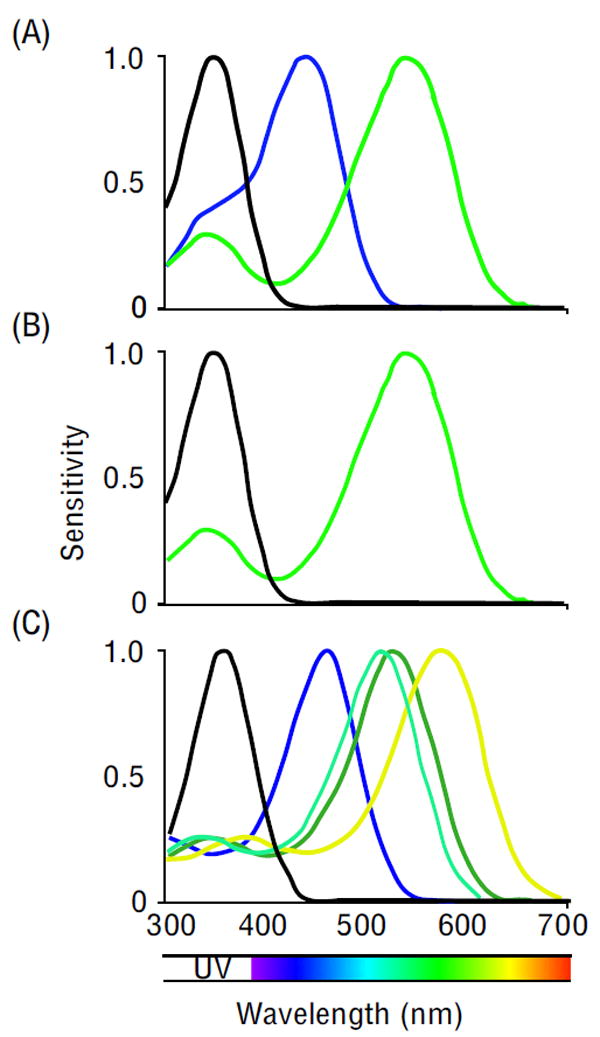Figure 1.

Spectral sensitivity of visual pigments in different insect species, normalized to have a peak value of 1. (A) The ancestral insect has three different Opsins that cover UV (black), SW (blue), and LW (green) and allow for the discrimination of wavelengths ranging from ~300-600 nm (figure adapted from [6]). With this combination of Opsins good color discrimination is already possible. (B) Most insects living under low-light conditions have reduced color vision due to, for example, the loss of blue Opsin. This is also the case for Coleopterans - although living under daylight conditions [9*,10**] (figure adapted from [6]). (C) Insects that primarily rely on color vision enhanced their ability to distinguish between different wavelengths by expressing additional Opsins. Some butterflies (Papilio Xuthus shown here) have improved color discrimination in the LW range (green and yellow lines) (figure taken from [18]).
